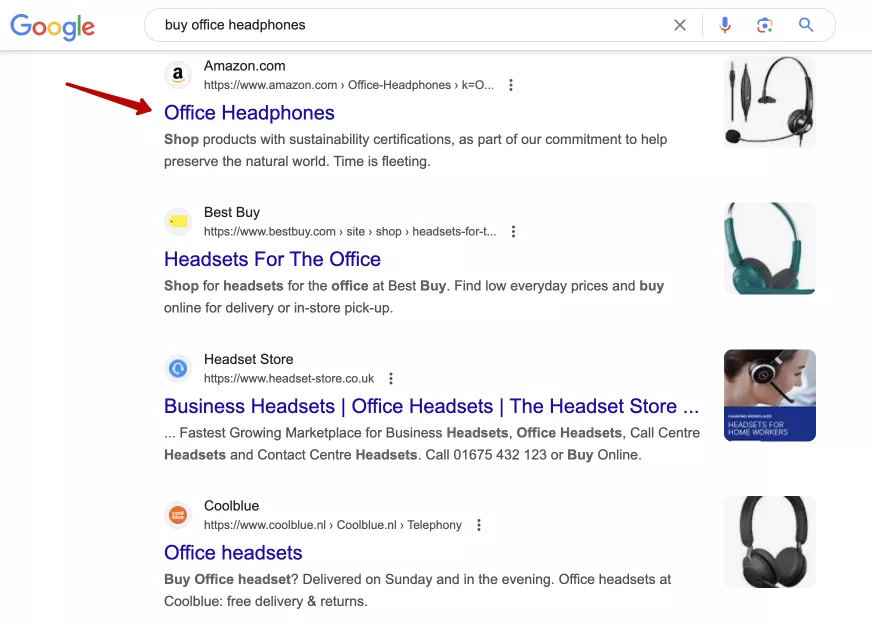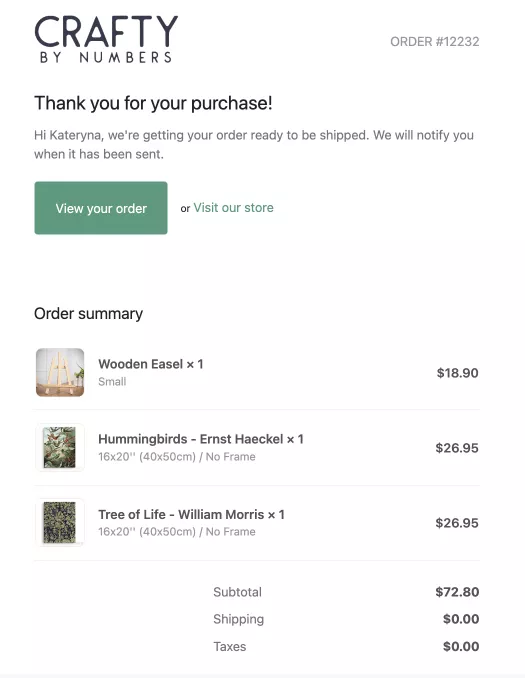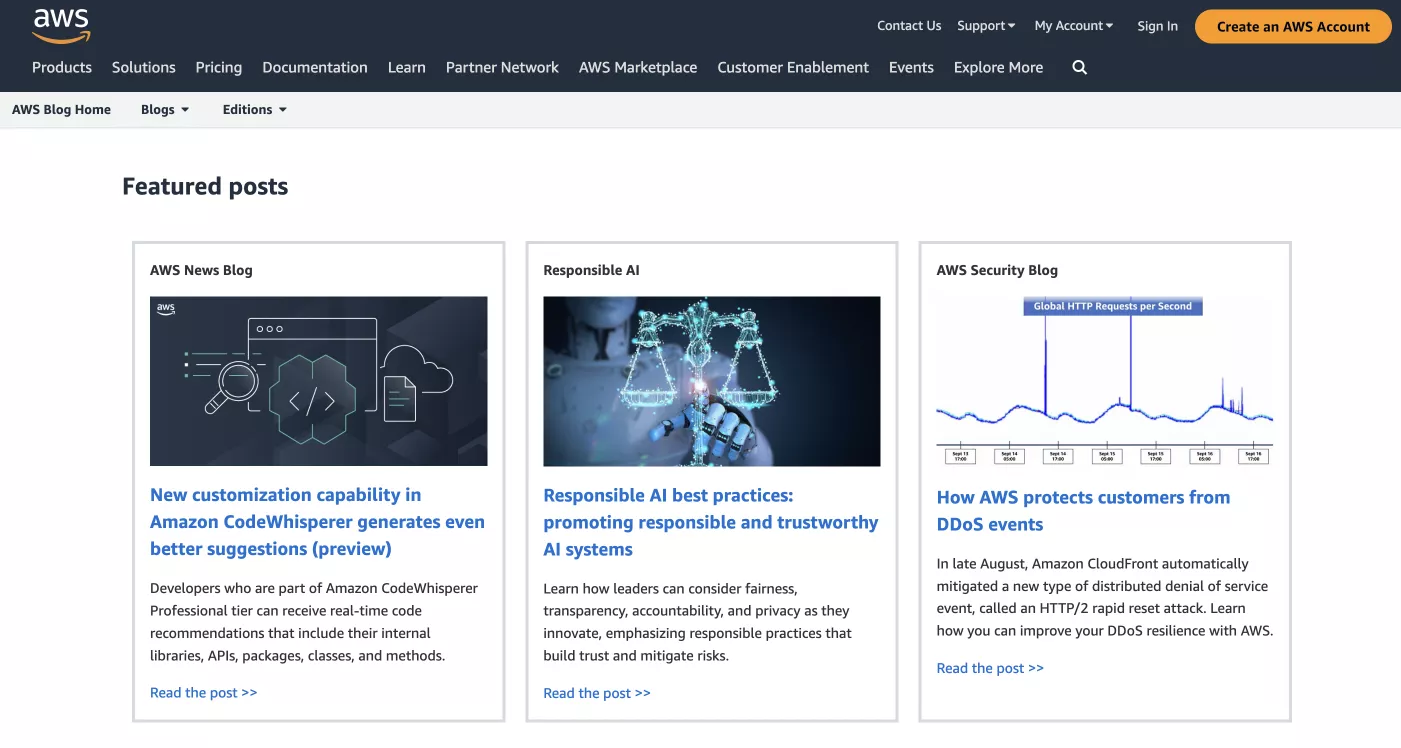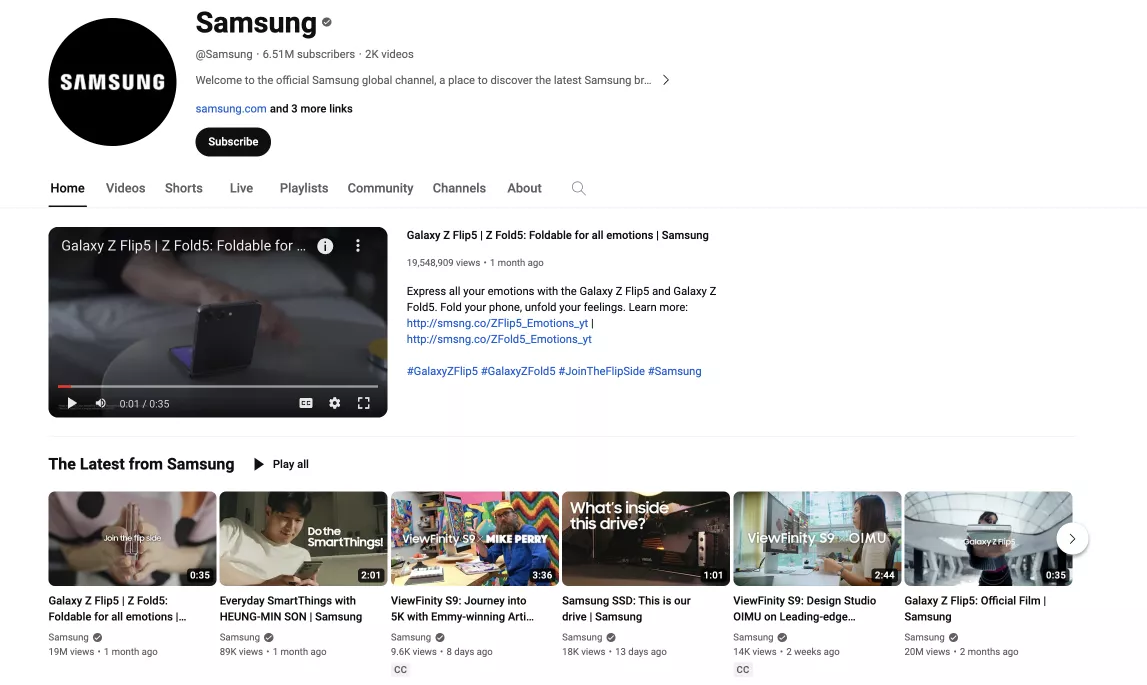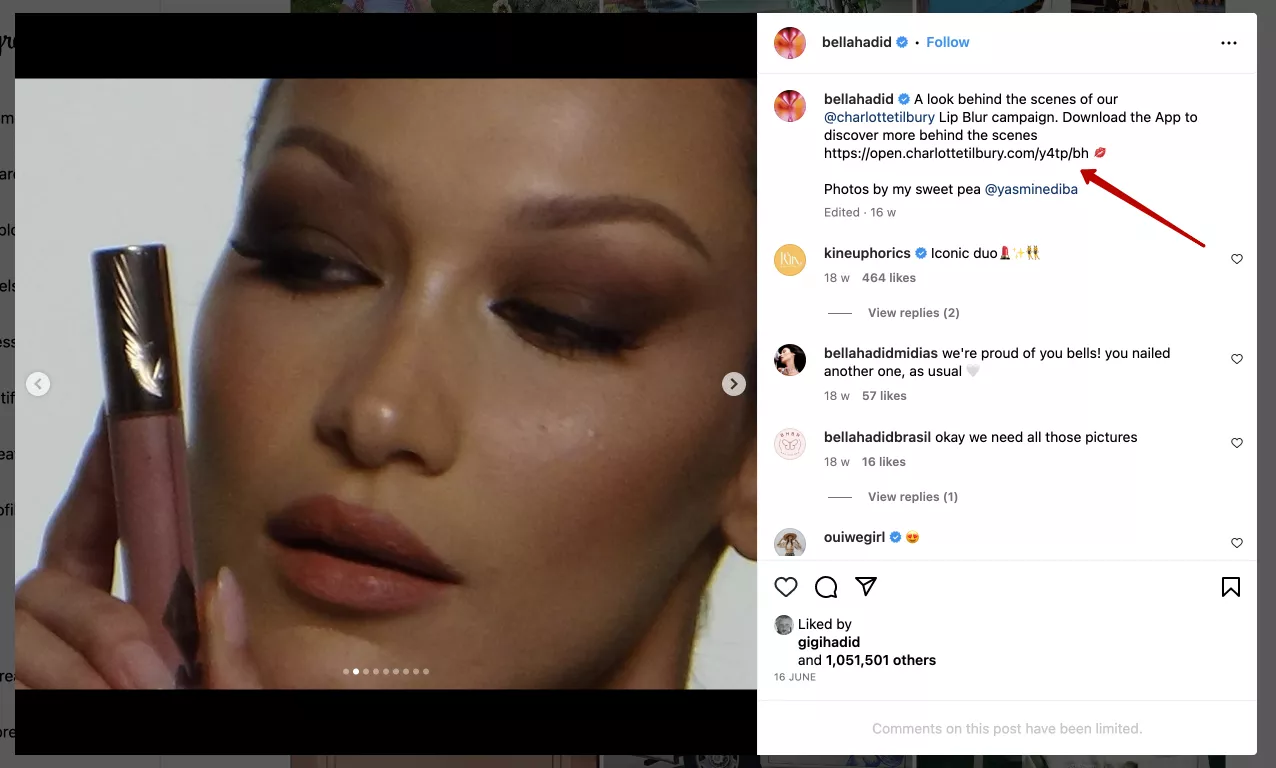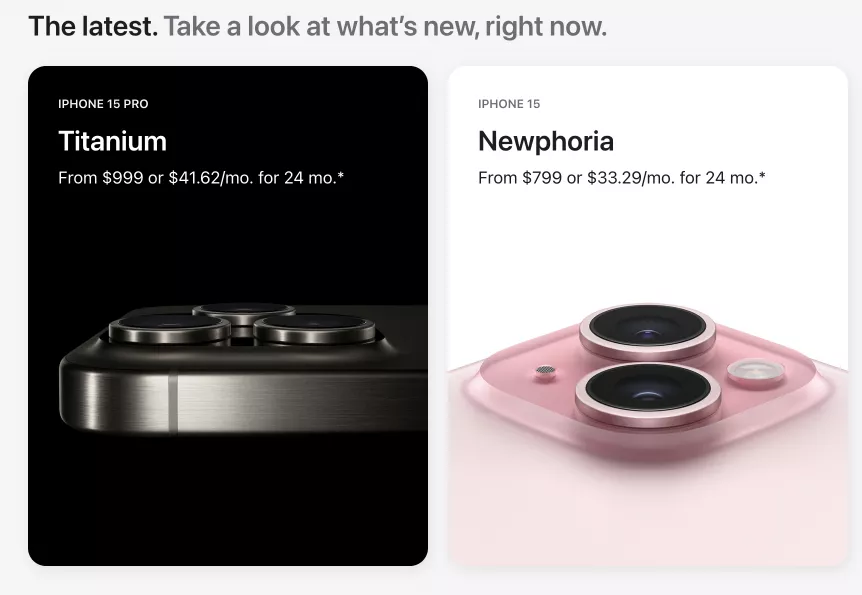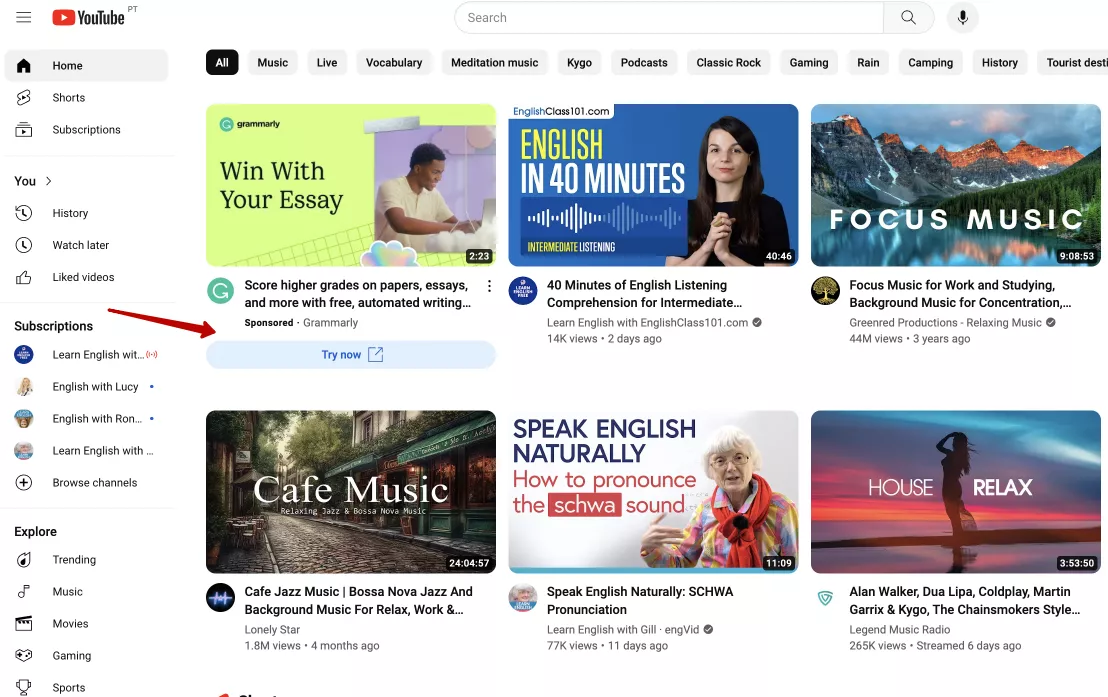Digital Marketing: What It Is and How It Works
A company's brand must always be in the public eye. One of the most effective ways to achieve this is to use digital marketing. In this article, I will explain how digital marketing works, what channels and tools are involved, and why businesses need it.
What is digital marketing?
Digital marketing is using digital channels to promote goods and services. It includes all marketing campaigns that are displayed on electronic devices, such as computers and smartphones.
This way of promoting products and services provides access to a huge audience. As of July 2023, there were 5.19 billion internet users, which made up 64.6% of the world's population. Of these, 4.88 billion (59.9%) were social media users.
Digital marketing is expected to grow at a CAGR of 17.6% between 2021 and 2026. The digital marketing industry is also expected to reach $807 billion by 2026.
Benefits of digital marketing
Online advertising has several advantages over traditional advertising tools such as billboards, leaflets, radio, and television.
- Reduced costs. Start-ups usually cannot afford expensive offline events, so they promote themselves online. For example, stores on Instagram do not have a full-fledged website but operate successfully on smaller budgets with the help of social media advertising.
- Detailed analytics. Advertisers can analyze the results of advertising campaigns to create better content and ads. Analytics helps optimize campaigns so that the business spends less while still offering relevant content to the audience. This drives sales and conversions. To get a complete picture of your advertising performance across all platforms, our Business Intelligence & Analytics Services can help you unify your marketing data and uncover growth opportunities.
- Customer feedback. BrightLocal's 2023 survey found that 49% of consumers trust online reviews as much as personal recommendations from friends and family. Customers who see many positive reviews of a product are more likely to purchase it.
- Precise targeting. Targeting helps direct campaigns to people who are interested in or potentially interested in products or services. The more precisely the target audience is defined, the more conversions the ad campaign will get. Targeted advertising allows you to deliver more relevant and personalized messages.
- A/B testing. Advertisers can test different ads on their audience in real-time to understand which ones work best. A/B testing helps boost user engagement, reduce bounce rates, and increase conversions.
Main digital marketing channels
Several channels can be used to promote goods and services online. Let me tell you about the most popular ones.
SEO
SEO (Search Engine Optimisation) is a set of actions aimed at improving the position of website pages in search results that are generated in response to user requests.
According to BrightEdge research, 68% of users start their Internet session by using a search engine.
SEO promotion is divided into internal and external optimization. Internal website optimization involves several stages.
- Niche analysis. This is a study of competitors that will help you understand which pages should be optimized, how to work with the link mass, and how to provide complete information on user requests in the niche.
- Semantic core collection. The keywords for which the website will be optimized are determined at this stage.
- Working with the structure. This includes expanding or deleting pages, menu items, and categories, as well as creating URLs for pages.
- Optimization of tags and meta tags, which involves adding "markers" to the pages of the site for search robots.
- Placing text content on the website.
- Checking the navigation and whether buttons, forms, etc. work.
- Searching for duplicate pages and broken links.
- Optimization of the website’s loading speed.
- Checking the indexing. Some site pages, such as the shopping cart and search, should not be indexed.
External website optimization is aimed at:
- placing links to the website on other websites;
- maintaining a good online brand reputation;
- establishing communication with customers through reviews.
The link mass refers to a set of links that lead to a website from other resources. Building it naturally through high-quality content and collaborations with other websites is advisable.
New websites should be optimized for the requirements of search engines at the development stage.
Case study: Art de Vivre, an English-language online art magazine, engaged our specialists to optimize its website before it was released to the public. Promoting a website with English-language semantics is difficult because you have to compete with other popular English-language publications. Getting results for a new website in such conditions is quite a challenge.
As the client involved us in the development stage, we could take into account all the technical requirements and lay down the right structure to achieve fast results in Google's organic search before the official launch of the site. Our specialists also took over content optimization after the site's release.
Results: The number of site visits between September 2022 and May 2023 increased from 140 to 4000 monthly. Additionally, the site started appearing in the Google Discover feed and received over 500 visitors through this channel from March to May 2023.
PPC (Pay-per-click)
Contextual advertising
This is advertising based on users’ search queries, interests, and behavior. It is divided into search and thematic advertising.
Search ads are ads in search engines that are distinguished from organic results by the "Ads" label. They are often placed directly below the search feed, but other options exist: at the bottom of the first page of results or between organic results on the second or third page. A Clutch survey has shown that 77% of people can distinguish between search ads and organic results.
Thematic advertising is placed on websites that are part of an affiliate network advertising system. For example, if a user searches for "how to remove a cherry stain from a white T-shirt" and goes to a popular website about stain removal, they may see an advertisement for a laundry detergent for white clothes.
Paid social
Advertising on Instagram, Facebook, TikTok, and Twitter allows you to target potential customers based on their age, gender, geolocation, education, behavior, interests, etc.
This information is voluntarily provided by users when they register on social networks, so advertising systems have detailed customer profiles. And even if a user hasn't told the social network anything about themselves, the systems are trained enough to analyze their behavior, determine their phone model and geolocation, and conclude whether to show them ads.
A study by Retail TouchPoints found that 76% of users have at least once purchased a product or service they saw on social media.
There are several basic targeting parameters commonly used by advertisers. These are standard for all social networks and direct advertising to:
- users of a certain age, gender, and profession;
- residents of a particular city, street, or geolocation radius;
- users who have made purchases on particular websites or clicked on certain links;
- subscribers and participants of related interest groups.
Case study: Prom.ua, a large Ukrainian marketplace, used our help to promote its mobile app on Facebook. The specialists introduced several innovations. Here is what they did:
- Expanded the reach of users from Android version 5.0 to 8.1 and higher.
- Divided the audience by gender.
- Increased the audience exclusion period in retention campaigns to 28 days.
- Added two ads to each group so the Facebook account could choose the most effective one.
- Expanded the interests in each group.
- Replaced banners with slideshows and prices.
- Changed creatives every 4-6 weeks.
- Separated the allowable CPA rates for each product category individually.
- Selected a single attribution model for all campaigns and groups in the account.
Results: The number of installed Prom.ua mobile apps increased by 52%. At the same time, the cost per installation (CPI) decreased by 10%. Thanks to retention campaigns within the app, the cost per acquisition (CPA) was reduced by 28%.
Direct/retention marketing
Bulk emails, SMS messages, and web push campaigns allow you to keep in touch with new and regular customers. Some advertisers are skeptical about this channel and associate it with intrusive messages or boring emails that constantly end up in spam.
However, a study by Campaign Monitor showed that businesses enjoy a return of $38 for every dollar invested in email advertising. In 2020, the global email marketing market was estimated at $7.5 billion, and this is expected to grow to $17.9 billion by 2027. The average annual growth rate for this period is expected to be 13.3%.
For effective email marketing, the main rule is to not send messages to purchased databases. It's best if customers sign up for the newsletter themselves in exchange for a discount or useful information. To encourage sign-ups, you should place forms and pop-ups on your website.
There are two types of newsletters: manual and automated. Manual emails should be sent out after analyzing the needs and preferences of the audience so as not to bore them. Automated emails (triggers) can be set up so that they are sent to users in response to their actions. For example, "Site registration confirmation," "Order Confirmation," "Abandoned cart," etc.
Case study: Netpeak specialists helped Avtokrisla.com with email marketing.
- They registered the company in Yespo, set up domain verification, and prepared technical specifications for developers.
- After designing a template for mass emails and subscription forms, they launched four basic triggered emails.
- They then enabled the collection of contacts from the registration form on the website and from the order page.
- Finally, they warmed up the domain and set up a regular email campaign.
Results: We got a positive ROMI in the third month, and in the fourth month, the ROMI exceeded 800%. Thanks to the subscription forms, the contact database has grown to have more than 6,000 users.
Content marketing
Content marketing refers to creating and distributing useful content to existing and potential customers. Content can be articles, videos, infographics, statistics, e-books, podcasts, webinars, case studies, etc.
According to Wyzowl, 73% of respondents prefer to learn about a product or service from short videos. For example, Samsung publishes product videos that last about 1-3 minutes on its YouTube channel.
According to a CMI study, 72% of marketers believe that content marketing helps educate audiences, and 63% believe that it increases customer loyalty. In addition, content marketing will:
- introduce customers to the brand;
- promote the site in search engines as sites with useful content are ranked higher;
- improve the customer experience.
Affiliate marketing
With the increasing popularity of social media platforms, the influence of opinion leaders who are actively represented in them is growing. According to Morning Consult research, 50% of millennials trust influencer product recommendations on social media. This figure is even higher than their trust in their favorite celebrities, which is 38%.
To ensure effective collaborations with niche influencers, follow a few rules.
- Study the audience. You need to know what platforms potential buyers use, what they are interested in, whether there are psychological triggers that push customers to convert, etc.
- Determine the compensation amount for affiliates. You need to calculate how much your company can offer affiliates. Most influencers already have a set tariff structure that depends on the type of advertising they will be doing. Also, the amount of compensation depends on the popularity of the blogger.
- Find influencers your company can afford. These should be reputable personalities with many views and are subscribed to by the company's target audience. Ideally, the influencer should have successfully participated in affiliate marketing programs.
- Use affiliate UTM links. These links track the customers who come from a particular affiliate and show the users' actions on the website. The customer will be taken to a page that will save a cookie in their browser by clicking on a UTM link. This file will help ensure that every affiliate conversion is accounted for, even if the customer pauses during the purchase, returns after a particular time, and still buys the product.
- Track the results. By analyzing the data, you can understand which affiliate channels work better. By comparing the effectiveness of affiliate marketing with other marketing activities, you can determine how to better allocate the marketing budget in the future.
Digital TV
According to a Comscore study, 81% of US households with Wi-Fi watch digital TV. Popular platforms in the Western market include Apple TV+, Disney+, and Hulu.
Digital TV boasts the precision and analytics of digital marketing. In traditional TV advertising, all ads are shown to all viewers. In contrast, ads on digital TV are targeted based on user demographics, interests, and viewing behavior.
You need to take a few steps to set up digital TV advertising.
- Set up an advertising campaign. First, you should define your target audience, for example, using the Connection Points Audience Platform. It shifts the focus from broad demographic targeting to more precise and valuable audience segments.
- Create engaging content. Once you have identified your target audience, you can create effective advertising messages that meet their preferences and needs.
- Choose the format of the ad, its budget, and the schedule.
- Monitor the success of the advertising campaign. Adjust it if necessary.
Ad formats may differ from platform to platform. For example, Hulu offers three ad formats.
- Pre-rolls. This is an ad before the video starts, and it lasts for 15 or 30 seconds. Since these ads don't interrupt the viewer in the middle of the video, they are usually unskippable but often contain an interactive element (for example, a "Learn More" button).
- Interstitials. They play at different points in the video and last from 30 to 90 seconds. The ability to skip an ad depends on how much time is left until a particular episode of content ends.
- Post-roll. They play after the content is finished, last 15 or 30 seconds, and are not skippable by default.
Digital marketing tools
Many apps help you sell products more efficiently and analyze the results of your PPC campaigns. Here are the most popular ones.
- Competitor analysis. It allows you to identify the products and services competitors offer, as well as how they promote and sell them. This data will help you choose best practices, use competitors' weak points to your benefit, and attract more customers. Useful tools: Serpstat, SimilarWeb, SpyFu.
- Monitoring brand mentions. It allows you to find out what customers think about the company, get honest feedback, and respond in time. Useful tools: Brand24, Mention, Mentiolytics.
- Analysis of search results. Find out which competitors are at the top of the search results and what you need to do to catch up with and overtake them. Useful tools: Google Search Console, Google Analytics, Internet Marketing Ninjas.
- Keyword research. Understand what users are looking for and the type of content you need to create to meet their needs. The keywords you choose will influence the content strategy and the topics that should be covered on the website. Useful tools: Ahrefs, SEMrush, Google Keyword Planner.
- Graphic design. This is an essential part of marketing; with the help of visual elements, the company can more successfully attract the target audience's attention and convey the necessary messages. Useful tools: Canva, Photoshop, Visme.
- Email marketing. To avoid formatting each email and sending hundreds of messages yourself manually, you should use ready-made templates and set up email automation. Useful tools: Mailchimp, SendPulse, Yespo.
- Work organization. Digital marketing projects involve close interaction with many specialists. You need to set and monitor tasks, organize online meetings, and have a convenient channel for working correspondence. Useful tools: Slack, Notion, Zoom.
Advertising formats in digital marketing
Marketers should use several advertising formats depending on the goals of the campaign.
Banner ads
This image ad is placed on various websites and aims to attract as much attention as possible. It can be either static or dynamic, for example, in the form of pop-up windows.
Video advertising
This is one of the most effective forms of advertising, as it helps to interest a potential customer, show them all the product's benefits, and create the right atmosphere.
Audio advertising
It is often used on streaming platforms such as YouTube Music or Spotify. Users who don't buy a subscription to these services listen to ads between tracks.
Users who listen to music on their phones do not see the video, but they will hear the audio adverts.
What digital marketing agencies do
Online marketing involves a huge range of tasks, and to do it well, you need to have a lot of knowledge about many different topics. Business owners often attempt to do website promotion by themselves, spend a lot of time on it, and fail to get results because one person cannot know everything.
For the best results, online promotion should be delegated to a marketing agency, where specialists are responsible for various services. They will optimize processes and avoid common mistakes.
Netpeak is a marketing agency that businesses turn to with various requests.
- Digital Intelligence: Web analytics, analytics for mobile applications, end-to-end analytics, and data visualization, as well as Google Analytics 4.
- SEO (Search Engine Optimisation): Website optimization according to the requirements of search engines.
- Outreach & Link Building: Increasing the link mass of the website and setting up its external SEO optimization.
- SERM: Management of online reputation in search results.
- SMM (Social Media Management): Brand promotion on social networks.
- Promotion of Telegram channels.
- Email & Direct Marketing: The use of mass and automated mailings.
- Creation of chatbots for business.
- Paid media: Contextual advertising in search engines, targeted advertising in social networks, Google Shopping, and Programmatic & Video for the creation of video ads.
- B2B Lead Generation: Search and qualification of business leads.
- Mobile app marketing: ASO (App Optimization), CRO (Conversion Rate Optimization), and ASA (mobile in-store advertising).
- Marketplace marketing: SEO and promotion on Amazon, Etsy, and eBay marketing.
- Consulting: Consultations on online marketing and HR and recruiting for marketing campaigns.
Each of these services is handled by a separate team. If you're looking to maximize your presence and sales on Amazon, consider partnering with an experienced Amazon marketing agency to leverage specialized strategies and expertise tailored to the platform's unique dynamics.
To get the most value from your marketing automation efforts, you need a clear understanding of what drives performance. Marketing Analytics Services can help you track, interpret, and optimize your campaigns with confidence.
How to create a digital marketing strategy
An online marketing strategy, encompassing the digital marketing strategy, includes:
- positioning the brand in the market and determining the type of content that should be used to convey the value of goods or services to the audience
- selecting marketing channels and media planning for each of them;
- creating a detailed strategy for a specific promotion channel.
Tasks of a digital marketing strategy
- Analyze the market to determine the company's current state compared to competitors.
- Identify promotion channels to test new approaches and optimize marketing costs.
- Create a detailed media plan with specific indicators to achieve the company's marketing goals.
Goals of a digital marketing strategy
- Select the target market. Is it worth entering the market? What is its potential? What marketing activities do competitors use? What are the pains and motives of consumers?
- Choose digital promotion channels. Which promotion channels are better to use? What should be the budget and media plan to achieve marketing goals?
- Search for growth points in the current market. What can you do better than your competitors? What are the growth points for the company's sales?
- Search for new niches and products. Which market should be chosen first? What are the barriers to market entry? What are the market trends, and what can be done to ensure the product’s success in the new market?
Case study: De Costa Group, a real estate agency in Turkey, Dubai, and Northern Cyprus, was entering a new market, and our specialists developed a strategy for this. The task was to research the real estate market in those regions and offer a map of digital tools and a media plan for three months to achieve sales targets.
What did the strategists deliver to the client?
- A detailed analysis of competitors in Turkey, Dubai, and Northern Cyprus markets.
- Results of the mystery shopper experiment and in-depth analysis of competitors.
- Analysis of buyers from Ukraine, Turkey, and Kazakhstan.
- A proposal for digital tools based on the See-Think-Do-Care methodology.
- Media plan with indicators and budget for online advertising.
Conclusions
- Digital marketing is the use of digital channels to promote goods and services.
- Its advantages are reduced costs, detailed analytics, customer feedback, precise targeting, and A/B testing.
- The main digital marketing channels are SEO, PPC (contextual and targeted advertising), email marketing, content marketing, video marketing, and affiliate marketing.
- Digital marketing advertising formats include banner, video, and audio advertising.
- In addition to offering a wide range of services, digital marketing agencies help to optimize processes and avoid common mistakes.
- An online marketing strategy includes brand positioning in the market, determining the type of content, selecting marketing channels, media planning, and creating a detailed strategy for specific promotion channels.
Related Articles
How to Set Up Consent Mode in GA4 on Your Website with Google Tag Manager
Let's explore how to properly integrate consent mode in GA4, configure it for effective data collection, and at the same time comply with GDPR and other legal regulations
Display Advertising Effectiveness Analysis: A Comprehensive Approach to Measuring Its Impact
In this article, I will explain why you shouldn’t underestimate display advertising and how to analyze its impact using Google Analytics 4
Generative Engine Optimization: What Businesses Get From Ranking in SearchGPT
Companies that master SearchGPT SEO and generative engine optimization will capture high-intent traffic from users seeking direct, authoritative answers

